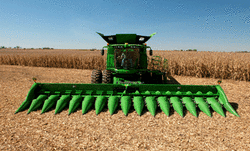Drivers have more difficulty recognising and reacting to pedestrians and cyclists under low-low conditions, and this effect is even more pronounced among older drivers. However, when pedestrians (and presumably cyclists) wear retro-reflective materials on their moving joints (biological motion, or biomotion), this decrement in recognition is greatly ameliorated in both younger and older drivers. - See more at:
http://www.roadsafetyknowledgecentre.org.uk/help-forum/252.html#sthash.oNoZj48c.dpuf
a statement by Dr Martin Langham, who specialises in the effect of glare on drivers
In answer to
the query:
"any research carried out re the effectiveness of hi-vis clothing and / or accessories in reduction of casualties? "
Dr Langham wrote:
At night high vis adds a little but only works if the pedestrians is expected in the road and the vehicle is only travelling under 27-28mph. That's to say if a pedestrian is on a dark country lane and you don't expect to find them there no matter how much reflective tape you have on not a lot will happen. From my forensic practice its only after impact does a driver know that there was someone in the road. The problem is that drivers can't recognise the shape of the reflective material as 'human'. The reflective material looks like an 'H' shape. Both Joanne and us have found better designs (improves conspicuity by a factor of 3) but appears to be little interest out there.
During the day it's not the reflective materials that help but the fluorescent material that helps. The material takes light from the UV spectrum and converts it to visible. Good colours are lime yellow or 'Saturn yellow' or 'limeyellow', or orange 'swamp berry orange' or 'international orange' - as its also known. Now both colours are good and I have a set of each type of clothing. It all depends on your environment. Orange works the best in rural environments and in the jungle because there is lots of green stuff around. Yes we test things in jungles as well as in Sussex
Yellow / lime yellow works well in urban environments because there is not a lot of green stuff around. Also mine has blue tape and for a moment motorists thinks I have some power to stop them before they realise I'm doing research.
Now the interesting bit are the variations out there. Some think that if orange and green are good then use both. Silly really as that works as camouflage. I did a review a while back to say it was a daft idea but I see them around on the roads. Some put patterns on the clothes and then that works as disruptive camouflage. Some have put lights on them and that works as motion camouflage. So generally makers of this stuff are making neat camouflage. I had a scientist from the US military with me and he took some photos of a school crossing patrol person he thought it was the best urban disruptive camouflage he had ever seen. Perhaps shows that human Factors people need to go out more. Might see troops holding a school crossing patrol sign at some point! Or perhaps you will not 'see' them.
I have also seen blue clothing on children if you want to hide things put them in blue the human eye finds blue the most difficult colour to 'see'.
Some children also have blue 'high vis' with reflective 'tags'. Which is a combination of poor colour and motion camouflage. One local council put reflective tags and stripes on cycles, which is the ultimate in all types of camouflage.
Pink yes it sounds daft but . . . although we did not test it Pink worked rather well. Also horsey types were often young ladies who liked pink. Safety clothing that you like well that's half the battle to get it worn.



